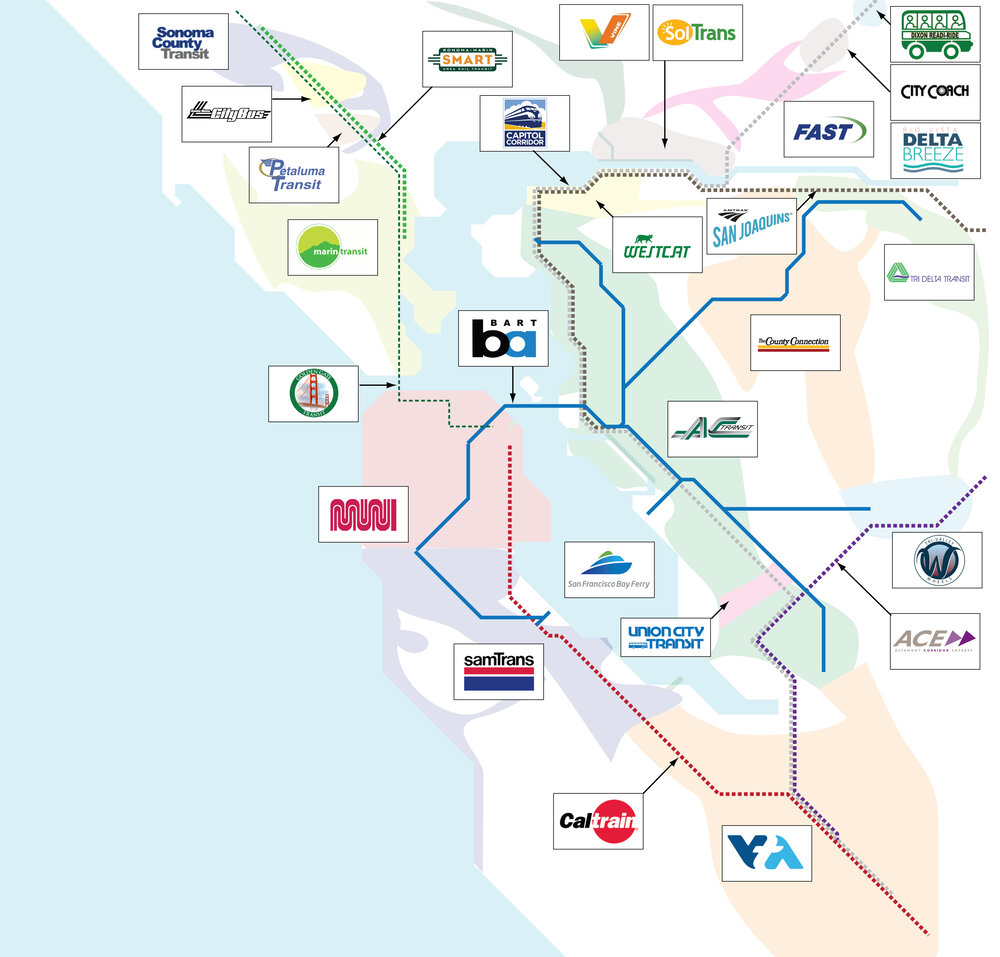Note: GJEL Accident Attorneys regularly sponsors coverage on Streetsblog San Francisco and Streetsblog California. Unless noted in the story, GJEL Accident Attorneys is not consulted for the content or editorial direction of the sponsored content.
Senator Aisha Wahab (D-10, Hayward, Union City, Newark, Fremont, Milpitas, Sunnyvale, San Jose and Santa Clara) recently announced a new bill, SB 397, calling on the California State Transportation Agency to come up with a plan to consolidate the public transportation agencies across the nine Bay Area counties (the Metropolitan Transportation Commission's jurisdiction).
As the bill is still quite broad, Seamless Bay Area hasn’t yet taken a position - but we have long supported a study of transit agency consolidations in the Bay Area in order to achieve seamless integration, an improved customer focus, greater agency capacity, and other benefits.
We look forward to the upcoming discussion at the Senate Select committee hearing, which we hope will be constructive and will lead to helpful bill amendments to narrow in on the specific objectives and scope of the consolidation analysis.
Consolidations can mean different things to different people, and the bill as currently written is vague about the definition of consolidation, as well as the goals of consolidation.
It can include: combining staffs, combining governing structures, or creating an ‘umbrella structure’ under which existing agencies are brought together, but which still operate as distinct divisions.
Seamless views the primary potential benefits of consolidation as:
- Quicker delivery of integrated service, fares, and improved customer experience that can help rebuild ridership
- Better and faster capital project definition, design, and project delivery, reducing costs
- Improved agency capacity, and attraction of better leadership and professional expertise
- Improved accountability to riders for connectivity
- Improved capacity to shape bay area transportation to shift people onto sustainable modes, & meet ambitious climate & housing goals.
Many highly successful transit systems are regionally consolidated under one organization - at a regional level, Transport for London, and Swedish regions including Stockholm, Malmo, and Gothenberg, and Vancouver’s Translink.
The Bay Area has also had many successful agency-level mergers in the past - Muni was the result of a merger, as was WETA and SolTrans. In other regions, LA Metro and Toronto's TTC are the result of successful agency mergers.
Our 2021 report on governance options for the Bay Area, Governing Transit Seamlessly, analyzed two different consolidation scenarios - consolidating the five Bay Area regional operators, and consolidating all regional and local transit agencies into one.
Our analysis found that both consolidation scenarios offered major potential benefits over status quo, including improved ability to bring about coordinated fares and service; ability to leverage economies of scale; and the ability to streamline decision making.
Wahab’s bill, as currently written, does not require consolidation, but simply calls for the creation of a plan. We hope the plan can include analysis of different options for consolidation, and not just the option of consolidating 27 transit agencies into 1.
It may be that the option that maximizes benefit for the public involves some level of consolidation, but not full consolidation of 27 into 1.
Overall, we think there is a lot of potential for this proposal to better serve riders - an analysis of the full costs & benefits of different consolidation options is long overdue & will be helpful to have in the same time frame as the region pursues a regional funding measure.
We think this an important topic, and we hope Senators on the Senate Transportation committee will propose thoughtful amendments to improve it. Now *is* the time for big ideas, for the sake of our region and our planet.
***
This post first appeared as a Twitter thread from Seamless co-founder and Policy Director Ian Griffiths, reprinted with permission






